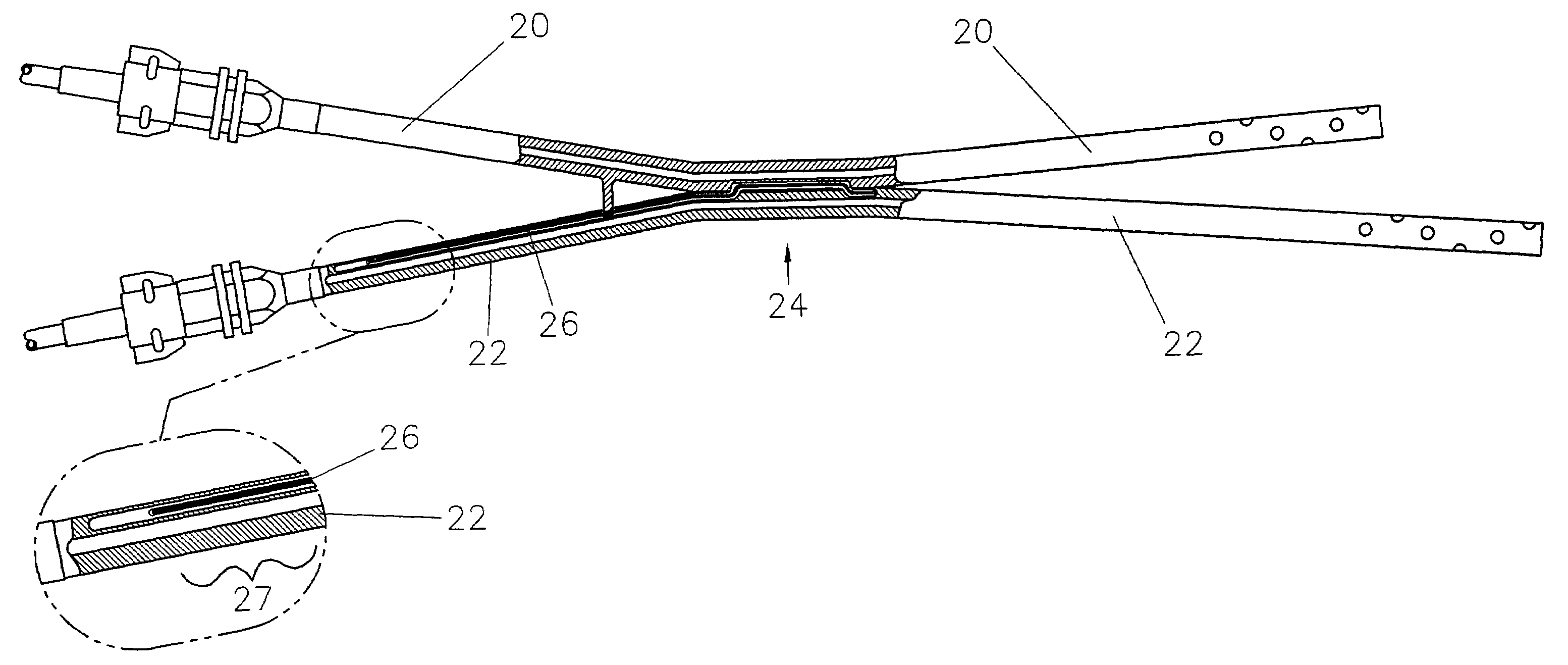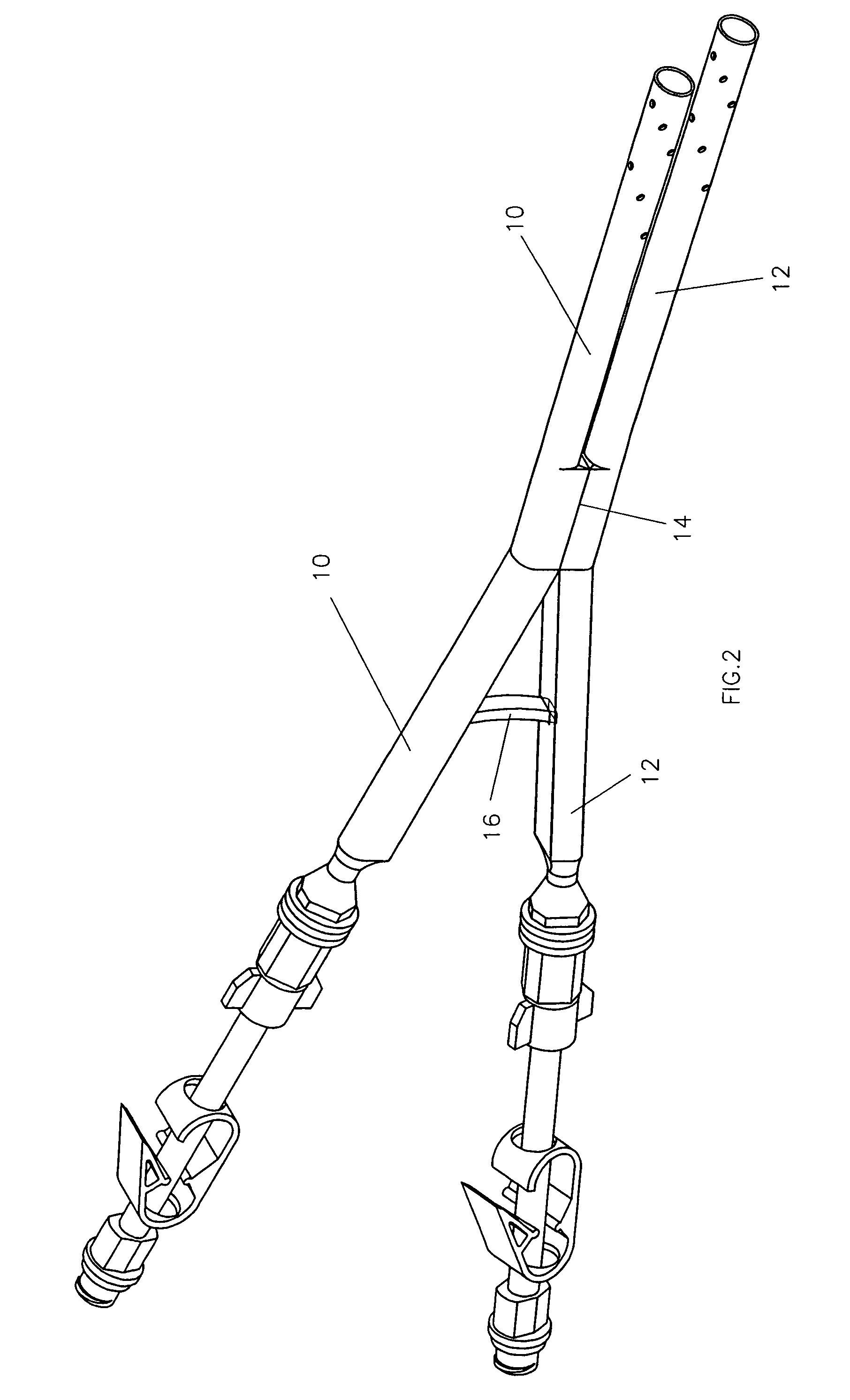Catheter retention
a catheter and catheter technology, applied in the field of catheter retaining devices, can solve the problems of time-consuming and dangerous, easy breakage during removal, and the downfall of the above-mentioned methods
- Summary
- Abstract
- Description
- Claims
- Application Information
AI Technical Summary
Benefits of technology
Problems solved by technology
Method used
Image
Examples
second embodiment
[0044]FIG. 5 illustrates the invention in which the two tubes 30, 32 are adjacent to one another along a zone 34 that provides a dove tail engagement between the two tubes. In this embodiment, the joining wires 36 extends through the teeth of both crenellated sections of the dove tail joint 34. The relatively thin flexible prong 38 extends from the wall of the tube 30 and has an end which fits into a recess in the wall of the tube 32. As in other embodiments, the joining wires 36 extend through openings in the end of the prong 38. The removal of the wires 36 and the separation of the tubes 30 and 32 is the same as in the embodiment of FIGS. 3 and 4.
[0045]The FIG. 6 embodiment is similar to the other embodiments in that there are two tubes 40, 42 having flat surfaces adjacent to one another along a zone 44 and having a separating prong 48. The key distinction in FIG. 6 is that the adjacent surface 44 is a longitudinal lap joint and there is only a single joining wire 46. The wire 46 ...
sixth embodiment
[0048]FIG. 9 illustrates a sixth embodiment in which first and second tubes 70, 72 are deployed adjacent to one another along flat faces 74. A first wire 76, called herein a loop wire, is contained in the wall of the tube 72. A second wire 78, called herein an anchor wire is contained in the wall of the other tube 70.
[0049]As may best be seen in FIG. 10, when the catheter is in use, the anchor wire 78 extends through two loops 82 which in turn are soldered to the loop wire 76. This connection holds the two tubes 70, 72 together because the wires 76, 78 are contained within the sidewalls of the tubes 70, 72.
[0050]When it is desired to remove the tubes from the patient, the two tubes are separated to facilitate such removal. The anchor wire 78, as illustrated in FIG. 11, is accessed by a medical professional and withdrawn from the tube 70. This disconnects the anchor wire 78 from the loops 82 and the two tubes 70, 72 can be separated and handled individually.
[0051]It might be noted, t...
PUM
 Login to View More
Login to View More Abstract
Description
Claims
Application Information
 Login to View More
Login to View More - R&D
- Intellectual Property
- Life Sciences
- Materials
- Tech Scout
- Unparalleled Data Quality
- Higher Quality Content
- 60% Fewer Hallucinations
Browse by: Latest US Patents, China's latest patents, Technical Efficacy Thesaurus, Application Domain, Technology Topic, Popular Technical Reports.
© 2025 PatSnap. All rights reserved.Legal|Privacy policy|Modern Slavery Act Transparency Statement|Sitemap|About US| Contact US: help@patsnap.com



